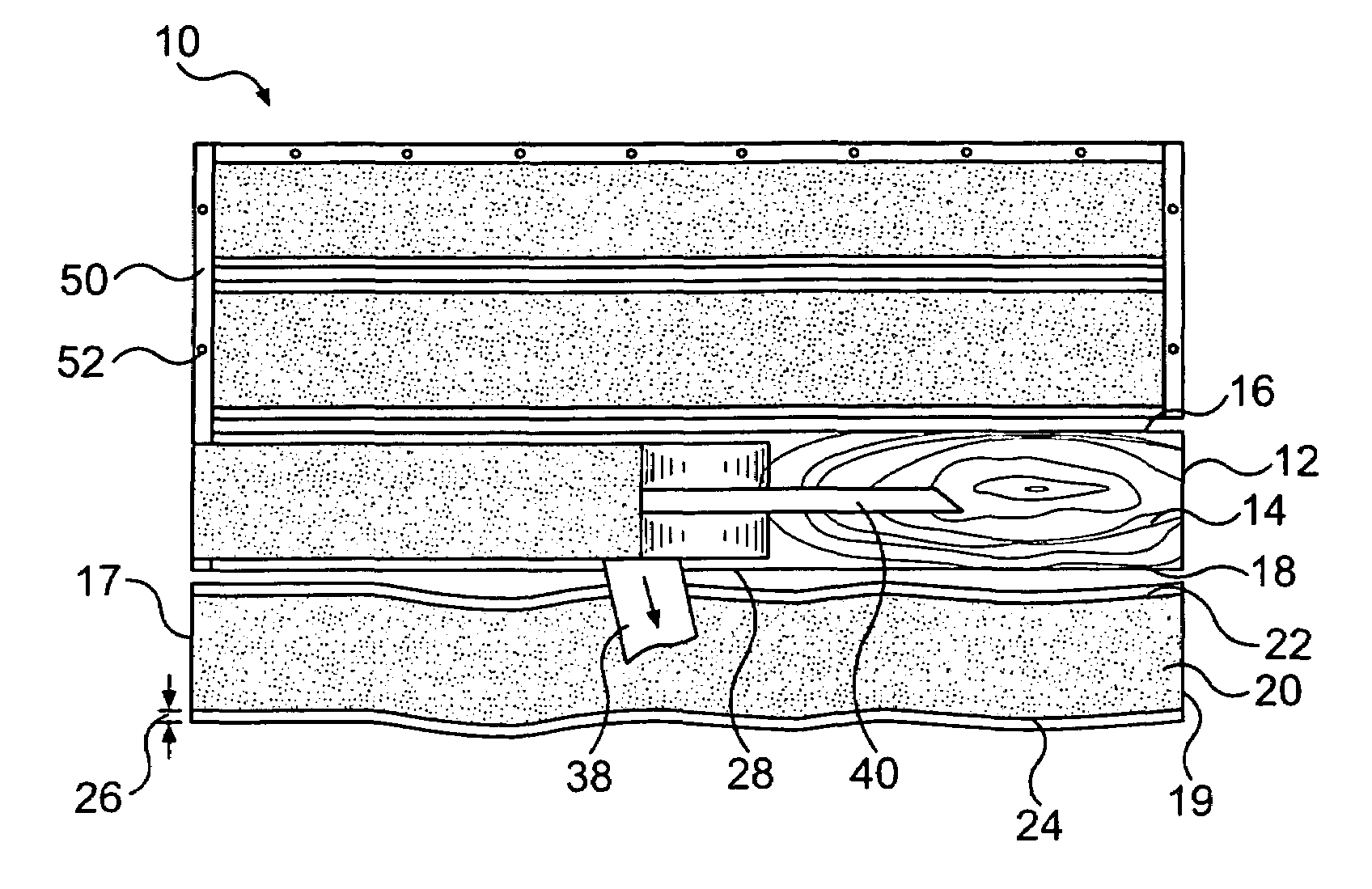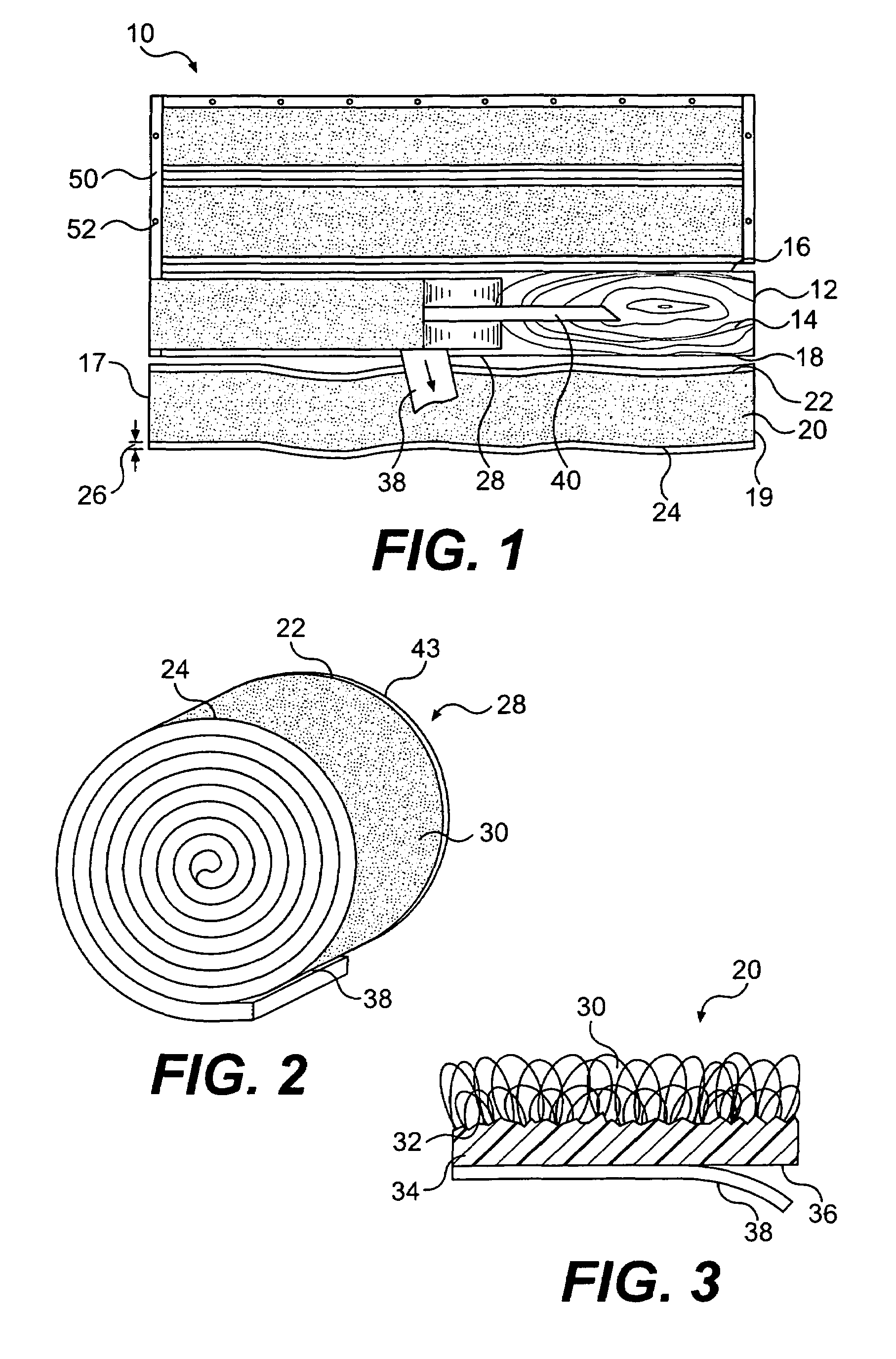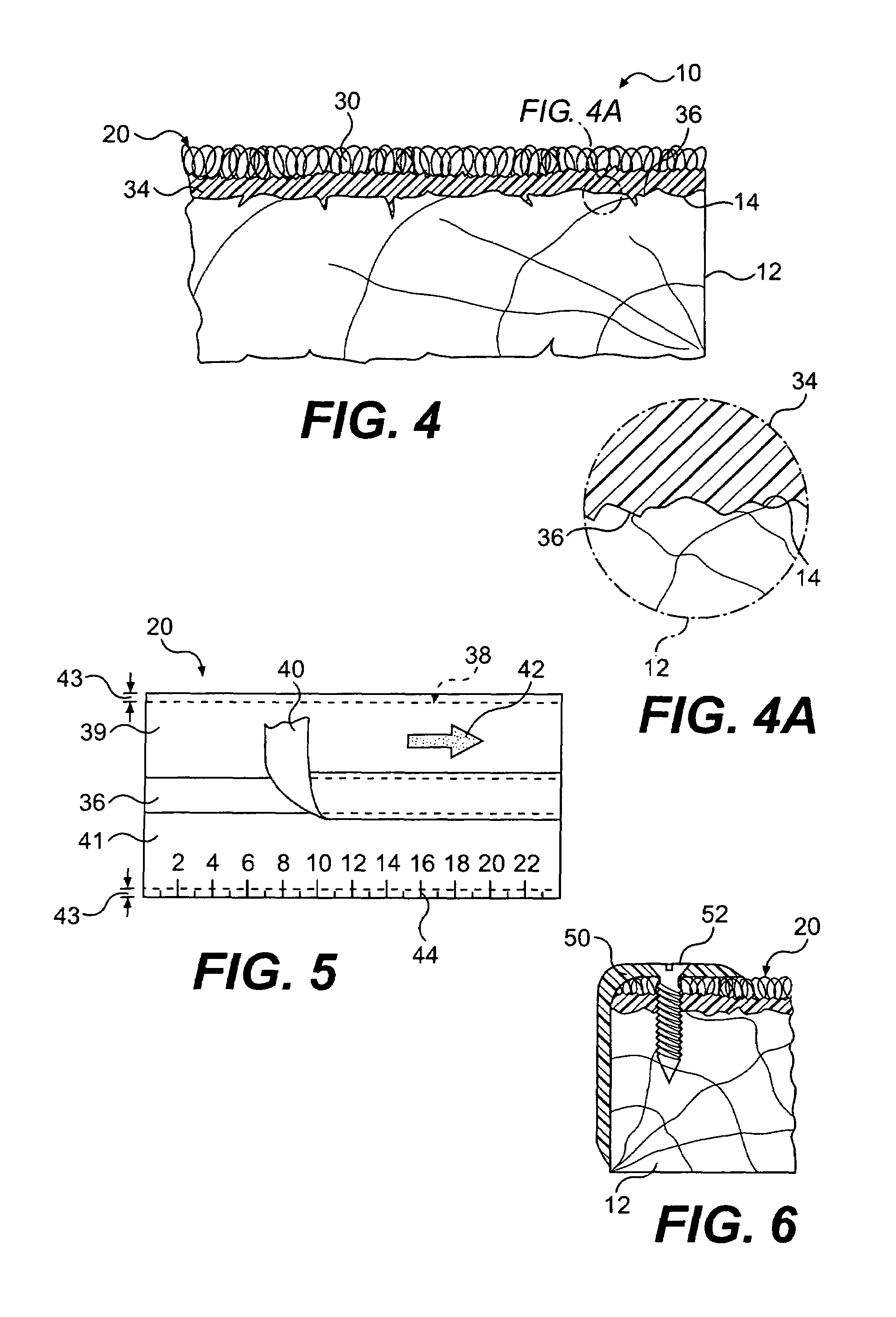Method of applying a covering for boards
a technology for coverings and boards, applied in the direction of carpet fasteners, flooring, transportation and packaging, etc., can solve the problems of affecting the appearance of the surface,
- Summary
- Abstract
- Description
- Claims
- Application Information
AI Technical Summary
Benefits of technology
Problems solved by technology
Method used
Image
Examples
Embodiment Construction
[0036]This invention is directed to a surface covering in the form of a strip particularly suited for covering boards, also referred to as planks or decking, in an exterior environment or an environment subject to exposure to the elements. The invention is particularly suited for boards made of wood, i.e. lumber, which tend to have irregular surfaces and typically exhibit warping and irregularities along their length. However, the invention may also be used on plastic or plastic composite boards to provide a non-slip surface. Accordingly, this invention may be used on household decks, docks, wooden walkways, porches or other such structures. For purposes of simplicity, the term deck used herein is intended to refer to any structure formed of boards. Of course, the surface covering in accordance with this invention may also be used on any other type of surface desired to be covered with a fixed, durable covering.
[0037]The covering strip in accordance with this invention is specifical...
PUM
| Property | Measurement | Unit |
|---|---|---|
| thickness | aaaaa | aaaaa |
| width | aaaaa | aaaaa |
| thickness | aaaaa | aaaaa |
Abstract
Description
Claims
Application Information
 Login to View More
Login to View More - R&D
- Intellectual Property
- Life Sciences
- Materials
- Tech Scout
- Unparalleled Data Quality
- Higher Quality Content
- 60% Fewer Hallucinations
Browse by: Latest US Patents, China's latest patents, Technical Efficacy Thesaurus, Application Domain, Technology Topic, Popular Technical Reports.
© 2025 PatSnap. All rights reserved.Legal|Privacy policy|Modern Slavery Act Transparency Statement|Sitemap|About US| Contact US: help@patsnap.com



